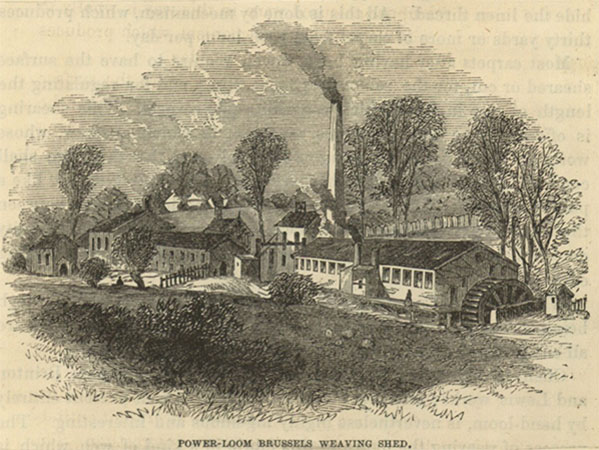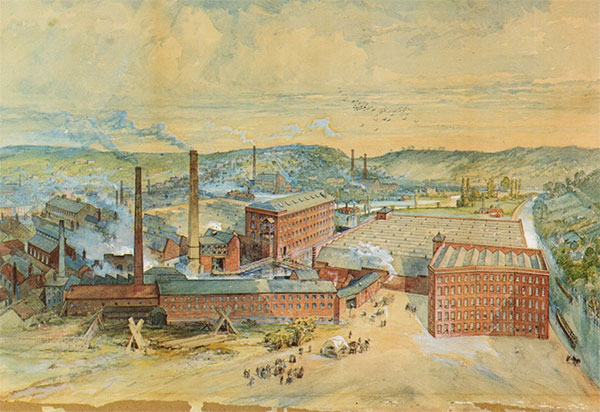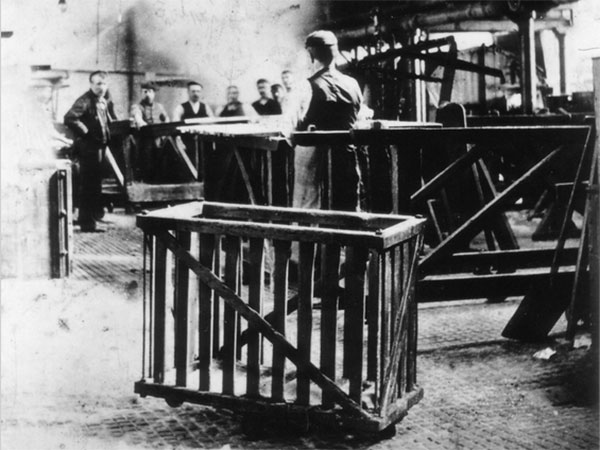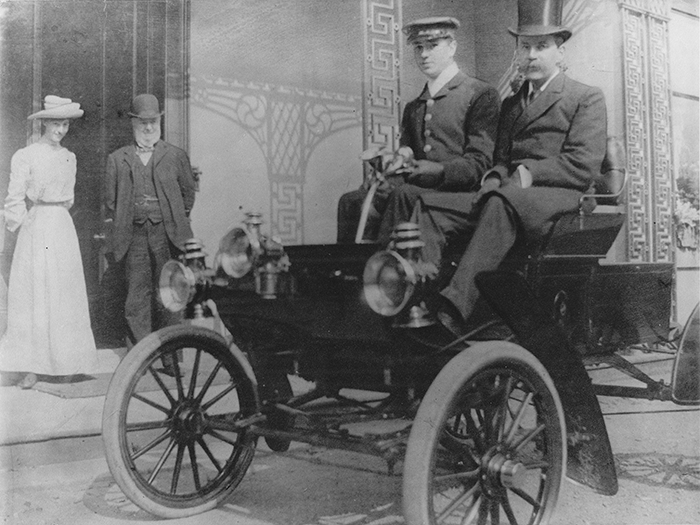
Bewdley Museum Collection
Kidderminster History
The 100 year span of the Stretton family medical practice in Kidderminster coincided with the great social changes of Victorian industrialisation, the two World Wars and the creation of the National Health Service. The world that Samuel Stretton was born into in 1832 was fundamentally different to the one that John Weston Stretton would have been familiar with at the time of his death in 1952.
Kidderminster Expansion and Industrialisation
Like many West Midland's towns, Kidderminster shared in the rapid growth in population and prosperity that came during this period, first with the building of canals in the 1770s and then with the rapid expansion of the railways, which arrived in Kidderminster in 1852. The rise in wealth throughout Britain, and the increasing middle-class demand for products were the background to the town's expansion.
The town is famous, in particular, for carpet making. Spinning and weaving were essentially hand crafts in the eighteenth century when Kidderminster saw its first carpet makers established. Technological development in the last half of the 18th century began to lead to automated work and made bigger, faster machinery possible. This machinery, in turn, required purpose-built premises, which in time became the mills, workshops and weaving sheds that accompanied Victorian industrialisation. When Samuel Stretton first took over the practice in the town in 1856, the rural market connection that Kidderminster had enjoyed was being replaced by mill and other industrialised work. The town enjoyed a boom period in the 1860s as power looms were introduced. Carpet manufacture increased threefold and the town expanded in all directions.

Bewdley Museum Collection

Bewdley Museum Bewdley Museum Collection
Victorian and Edwardian Social Change
There are two sides to Victorian growth and properity. Wealth increased, but unequally; the arrival of universal education made for a more skilful workforce, but also led to demand for social improvement; the railways and new factories expanded horizons, gave alternative work opportunities and increased communication, but they also left many people behind. The 1881 census lists 339 people in the workhouse, many of whom were old weavers, spinners and carpet makers. This is only four years after the building of the new Town Hall. Economic growth was often uneven too with its prospect of unemployment for factory workers.
Social Improvement
The drive for social improvement is a well-studied feature of the Victorian and Edwardian period. The number of shopkeepers, clerks, small merchants and bankers increased, the sytems needed adminstering by clerks, managers and professionals, towns needed regulating. Lawyers, teachers and medical practictioners increased in line with the demand for their services. Doctors and surgeons, in turn, were able to do more and demanded more of their own institutions - the surgeries hospitals and clinics associated with their work and were themselves expected to produce work of a higher standard.
A small example of this was the creation of the Kidderminster Medical Society in 1893, which was inaugurated at the Church Street home of Lionel Stretton at the invitation of his father. The minutes of the KMS give an insight into how hard local doctors worked to stay up to date with most modern thinking. From the start the minutes also criticise the local medical aid societies, which were responsible for the health of the poor. They demonstrate how closely local practice was embedded in the local community of the time.
Before and After The First World War
Three major changes stand out from the period either side of the First World War, the increasing role and emancipation of women, greater mobility with the bicycle, the motorbike and the car and the vast expansion of the service sector.
Female Emancipation and the Expansion of Services
Female weavers had, of course, been a feature of textile making from early times, but in Victorian Britain, domestic service was the principal occupation for lower class women. In spite of the best efforts of the Suffragettes before the war, it was the First World War, which proved that women were economically indispensable: the men fought and women took over the roles previously reserved for men only. It is significant that domestic service, already in decline by 1901, declined rapidly after the First World War as working women benefitted from better educational opportunities to move into light industry, clerical and office work and more middle class women became teachers and nurses. Domestic service could not keep pace with the higher wages the new occupations paid and with the new expectations that were set.
The Growth of Mobility
Mobility too increased. The adoption of the train, the bicycle and the motor car were the triggers that allowed people to live independently in a way that would have been a mystery to families living 100 years earlier. In spite of the Great Depression of the 1930s, changes to society had become irreversible. The continuing growth of manufacturing as it spread to the automotive industry and the continued rapid growth of service sector jobs continued the democratisation. Not that we should overestimate the effects of these during the 1920s and 1930s, but they proved to be the precursors of the way of thinking that allowed the National Health Service to spring to life after the Second World War.
The social context in which medicine was practised had changed. The Victorians had started the push to improve. The evidence that good public health practice improved lives had become irreversible and mortality had declined in many areas of medicine. Better nursing, anesthetics, antiseptics and aseptic procedures which developed during the Stretton families lifetimes could only really be practised with the best and most modern facilities. They also required the growth of the very specialities and support services you could see expanding everywhere else.

